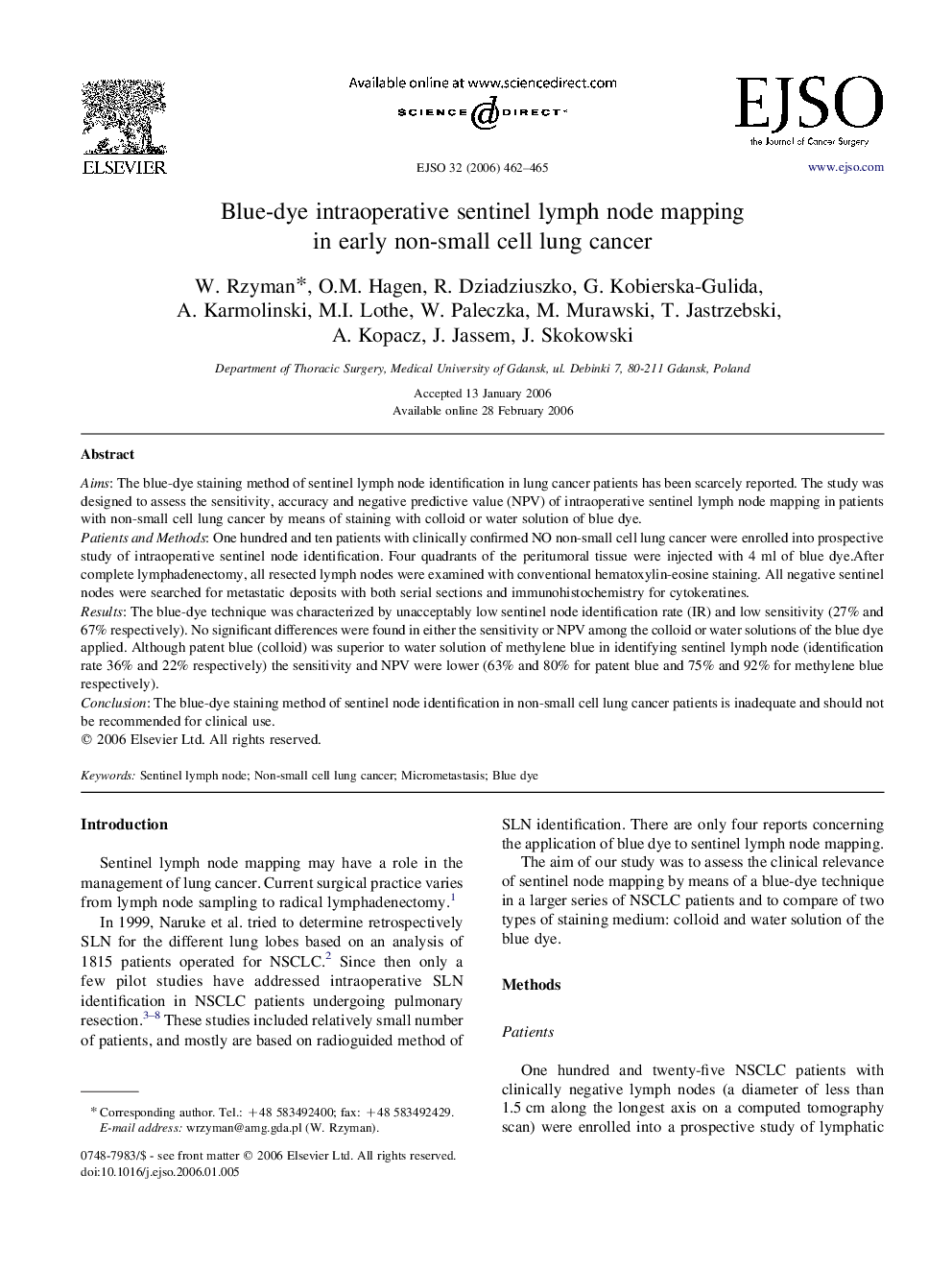| Article ID | Journal | Published Year | Pages | File Type |
|---|---|---|---|---|
| 3988316 | European Journal of Surgical Oncology (EJSO) | 2006 | 4 Pages |
AimsThe blue-dye staining method of sentinel lymph node identification in lung cancer patients has been scarcely reported. The study was designed to assess the sensitivity, accuracy and negative predictive value (NPV) of intraoperative sentinel lymph node mapping in patients with non-small cell lung cancer by means of staining with colloid or water solution of blue dye.Patients and MethodsOne hundred and ten patients with clinically confirmed NO non-small cell lung cancer were enrolled into prospective study of intraoperative sentinel node identification. Four quadrants of the peritumoral tissue were injected with 4 ml of blue dye.After complete lymphadenectomy, all resected lymph nodes were examined with conventional hematoxylin-eosine staining. All negative sentinel nodes were searched for metastatic deposits with both serial sections and immunohistochemistry for cytokeratines.ResultsThe blue-dye technique was characterized by unacceptably low sentinel node identification rate (IR) and low sensitivity (27% and 67% respectively). No significant differences were found in either the sensitivity or NPV among the colloid or water solutions of the blue dye applied. Although patent blue (colloid) was superior to water solution of methylene blue in identifying sentinel lymph node (identification rate 36% and 22% respectively) the sensitivity and NPV were lower (63% and 80% for patent blue and 75% and 92% for methylene blue respectively).ConclusionThe blue-dye staining method of sentinel node identification in non-small cell lung cancer patients is inadequate and should not be recommended for clinical use.
